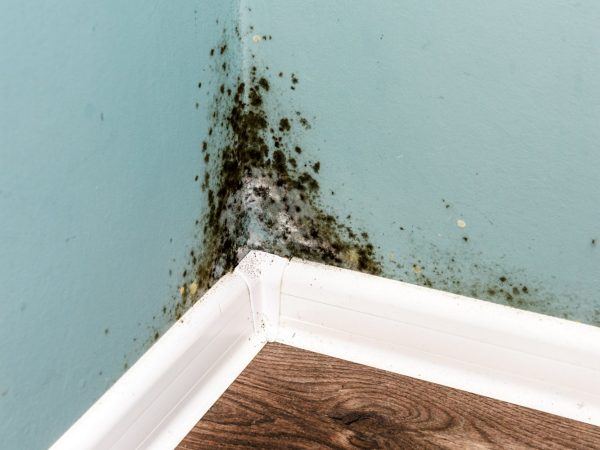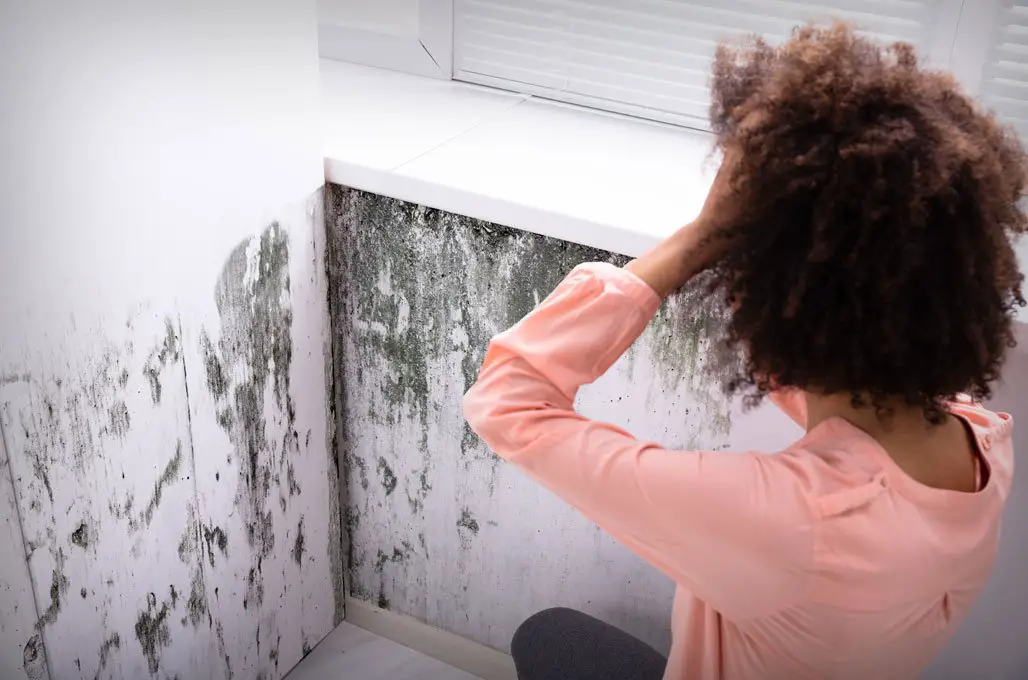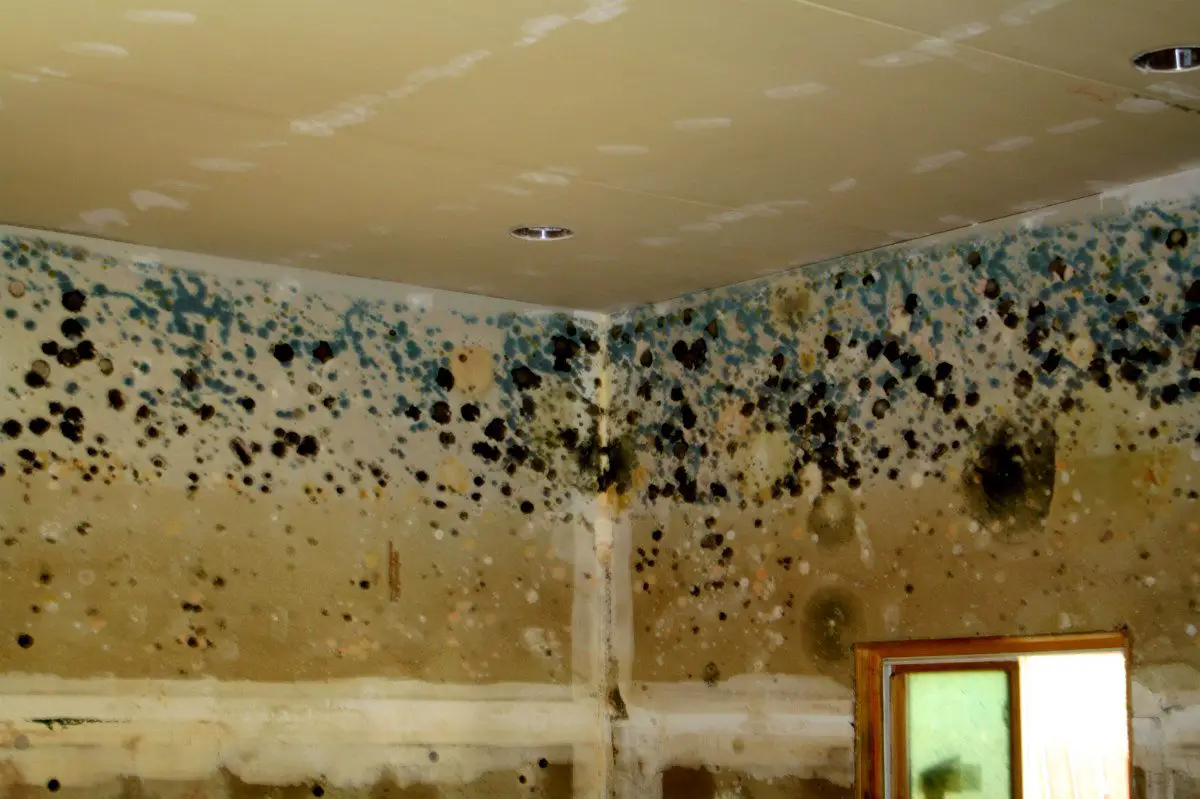How To Know If Mold Is In Your Walls
Mold often grows out of sight in wall cavities due to water problems like flooding or leaks. Before you know it, it creates a toxic environment in your home, compromising the indoor air.
The good news is that even hidden mold leaves behind clues. You can find out if mold is growing in your walls in several ways. Here is how to spot mold that grows inside your walls.
Moisture
If your home has suffered severe water damage, mold will grow in your walls if the water wasnt removed within 24-48 hours. If water reached drywall, the best practice is to cut it one foot above the water line.
Other water problems like leaking pipes may also trap moisture inside your walls. Even in these cases where leaks are visible, moisture can get inside walls, providing mold a place to grow. Be aware of signs that drywalls are moist such as:
- water stains
- discoloration
- deterioration like peeling, bubbling or cracking of the paint or wallpaper
Moreover, if the walls are bowed, bulging or warped, they most likely contain moisture. Another clue is if the surface of walls feels wet or damp.
Visible Signs of Mold
First of all, if the wall is rotting, it likely has mold underneath it. In less severe cases, mold might not be that noticeable. Inspect the walls and check for mold on walls behind furniture and along baseboards too.
Another sign of visible mold is discoloration of walls, even if it has been painted over. If the water damage inside the walls persists, mold will show signs on the surface.
Common Types Of House Mold
Wondering what types of mold are the most common in houses and which ones you should be concerned about? Lets discuss a few of the most common types of household mold now.
- Cladosporium Cladosporium is one of the most common household molds. It usually grows in a greenish-brown colony, but can also be nearly black in color. It is rarely harmful unless you have a mold allergy, but may cause minor issues like toenail or fingernail infections.
- Penicillium Penicillium is sometimes called green mold, as it is usually dark green in color. It tends to grow in large, consistent patches on the walls. As the name suggests, penicillin is derived from some kinds of this mold. However, some kinds of penicillium mold may be toxic to humans and animals.
- Aspergillus This type of mold is usually greenish-white in color, and may be more raised with a more cloudy appearance than other types of mold. It is not harmful, unless you have a weakened immune system, in which case it could infect the lungs or sinuses.
- Alternaria Alternaria mold is usually greenish-white, but can also appear in black patches, so its sometimes confused with black mold. Alternaria can be a factor in exacerbating asthma, particularly for those who may have mold allergies.
How Does Mold Get Into Houses
Microscopic mold spores exist almost everywhere indoors and outdoors. While there isnt much you can do about mold outdoors, when it comes to mold in your home you have options. If you have a mold problem in your home, odds are you will smell it first. If you have an earthy or musty odor in your home, theres a good chance you have mold. Occasionally you may see discolored smudges and/or blotches that look like mold and sometimes youll even see mold.
Mold spores can remain dormant for 50 years or more. They become active when they come into contact with moisture and food. Where there is mold there is always water. Once mold becomes active it develops into mold colonies which in turn release more spores into the air.
Also Check: How To Remove Mold From Toilet Tank
What Are Signs Of Mold In Your House
Homes are supposed to shield us from the harmful things outside like water, wind, and extreme temperatures. Sometimes, however, our houses fail to provide the necessary shelter and moisture enters our house and allows mold to grow.
If there is adequate moisture mold can grow in our bathrooms, kitchens, basements, and attics. Mold can also grow undetected inside of our walls.
As someone who grew up with allergies, Im vigilant about monitoring moisture inside my home. I have felt the effects of mold allergy symptoms and suffered for a long time.
In addition to health problems, mold can cause structural damage and damage to furniture inside a house.
In todays article, Ill share 13 important signs of mold in your house. Growing up I remember seeing mold in my bathroom and near windows. At the time I didnt realize it but the fungus was affecting the quality of my life.
What Does Black Mold Exposure Treatment Look Like

Just like the diagnosis, the treatment of mold exposure differs from doctor to doctor. One thing most doctors will advise you to do is to test for and, if needed, remove any unhealthy mold conditions from your home. Even if the treatment will help in the short-term, it wont be effective over the long-term if your indoor environment isnt improved.
To treat the symptoms, doctors may suggest:
- Over-the-counter medication. Medicine that would decrease the airway inflammation and suppress the allergic reactions.
- Nasal sprays to deal with a runny or stuffy nose or rinses to clear your nasal passages from inhaled mold spores.
- Regular allergy medicine
A persons immune system has to be working properly to fight mold symptoms, so changes in a lifestyle or diet might be necessary. In more severe cases of allergies, doctors prescribe immunotherapy to provide relief from symptoms
You May Like: How To Get Mold Off Shower Grout
Who Is Most At Risk Of Mold Exposure
We come into contact with mold in three primary ways: inhalation, physical contact or ingestion. But every reaction to mold is different, as no two immune systems are the same.
Some people are more sensitive to mold than others. Both your genetic makeup and your current state of health are factors that will influence your reaction.
The following groups of people are especially susceptible to the adverse health effects of mold exposure, because their bodies may be weak to begin with:
- Infants and small children
If youve been experiencing some of these symptoms and are concerned, .
Most Common Places To Check For Mold In Your Home
If you have allergies or a chronic lung disease like asthma, youre probably very aware of the effect mold can have on your health. But even if you have a healthy immune system and no allergies, mold can cause a variety of health problems coughing, wheezing, and throat, skin, and eye irritation, to name a few. Mold is everywhere and, though you cant fully control your exposure to it outdoors or in public spaces, you can check for mold in common places around your home and take measures to prevent and remove it.
Recommended Reading: How To Get Rid Of Mold On Walls
Healthy Home Myths Debunked
Common areas to test for black mold are basements, crawlspaces, bathrooms and kitchens where moisture and condensation may gather regularly. A water source is the first requirement for mold growth, so any damp, humid areas of the home are often susceptible.
Sight and smell may give you a good indication of whether or not you have a black mold problem black mold tends to have a strong, musty smell, and of course it displays a trademark black color. If you believe you have black mold growth in an area of your home after these initial inspections, you have two options: professional mold testing or do-it-yourself testing.
Professional mold testing companies will take samples of the air and any areas of mold growth, identify precisely what type of mold is present, and recommend next steps for remediation.
If you go the DIY route while testing for black mold, you will need to purchase a mold testing kit from a hardware or home repair store, take samples of the air and affected areas yourself, and then send these in to a testing facility, which will report back as to which type of mold is present.
Black mold can be an expensive and potentially unhealthy problem for homeowners, but by testing for black mold, you can know for sure if you’ll need to take steps to eradicate black mold from your home.
How To Prevent Mold
Whether you just got rid of the mold or you dont ever want to see it in your house you need to know the mold prevention rules. To prevent mold from appearing in your house:
Small investments in prevention can go long waysand keep a lot of cash in your pocket!
Also Check: What To Do If You Have Mold On Your Walls
Can You Get Sick From Mold In Your House
Yes. Those will allergies, compromised immune systems, asthma, or other such issues are at a higher risk as even minor, non-toxic molds could cause a variety of uncomfortable symptoms. Mold in your house is rarely life-threatening. However, prolonged exposure is far from ideal for a number of reasons.
Your Planter Of Begonias Is Leaking
Exterior landscaping that is close to the home, as well as planters placed against exterior walls, can also lead to mold issues, especially for stucco homes, says Gregg Cantor, President and CEO of Murray Lampert Design, Build, Remodel. Moisture finds its way inside the walls and can cause mold growth in the drywall and insulation. This type of mold growth can be particularly dangerous because its rarely caught until the mold shows up on the interior of the wall, at which point the growth can be extensive and a danger to your health, says Cantor. Watch out for these other sneaky backyard dangers you need to be aware of.
Recommended Reading: How To Remove Mold From Linoleum Floors
Helpful Tips For Reducing A Stuffy Nose
Nasal decongestants in the form of sprays and tablets can help relieve a stuffy nose. However, these are only temporary fixes and should not be used too often as they can become addictive. In fact, nasal sprays can actually damage your nasal passages if used in excess.
A humidifier can also help reduce stuffiness by adding moisture to the air and promoting mucous production.
If you are still having persistent stuffy nose, you should contact your doctor or another medical professional.
Condensation Around The Windows

Mold is often found near windows. It may not be a lot of mold but even a small amount of mold can damage paint and cause health problems.
Mold is less likely to occur on newer windows. Condensation is common on old, single pane windows but rarely on dual pane windows.
Also, make sure the window is set correctly so air isnt entering the house through the sides of the window.
Also Check: How To Clean Mold Off Walls Before Painting
What Are Allergenic Reactions To Mold
Most molds are allergenic. But while many people can handle a little bit of mold exposure, others are born sensitive and will experience allergic reactions. Allergic reactions, ranging from mild to severe, are the most common symptoms associated with mold exposure.
What Causes Nasal Congestion
You May Like: How To Eliminate Mold Smell
How Long Do Mold Symptoms Last
The tricky thing about mold exposure is that its different for each person. The amount of time mold exposure symptoms persist depends on:
- What type of mold they are exposed to,
- How long the exposure has been,
- How well their bodies eliminate toxins
Those who process toxins well can see their symptoms disappear as quickly as a few days.
Others who eliminate toxins slowly can experience symptoms for much longer. They could be ill for months or even years after the source of mold is eliminated.
Growth Spots Of Varying Colors
Black mold, as the name implies, is often dark in color. When searching for black mold, look for circular-shaped spots that are black, dark green or dark brown. Some black mold can also take on shades of orange or have flecks of white within it.
Most of the time, black mold has a slightly furry appearance. Larger growths of mold may appear as a black stain that stretches along your wall, floor or ceiling.
Don’t Miss: How To Keep Mold Out Of Your Basement
What Are The Side Effects Of Mold In Your House
How do molds affect people? Exposure to damp and moldy environments may cause a variety of health effects, or none at all. Some people are sensitive to molds. For these people, exposure to molds can lead to symptoms such as stuffy nose, wheezing, and red or itchy eyes, or skin.
Black mold is toxic, which means exposure can fight against your neurons and cause noticeable changes in the brain. A mold problem can cause you to experience dizziness, anxiety and depression, and even hallucinations.
Moreover, How long does it take for mold to affect you?
Under ideal conditions , it takes 24 to 48 hours for mold to germinate and grow. Typically, the spores begin to colonize in 3 to 12 days and become visible in about 18-21 days.
Secondly, How do you know if mold is making you sick?
Spahr. Symptoms of mold exposure may include headache, sore throat, runny nose, coughing, sneezing, watery eyes and fatigue. In those with asthma, asthma attacks can occur. In those with impaired immune systems, serious infection can occur.
Simply so, How do you treat mold exposure?
Nasal sprays or rinses. Over-the-counter nasal corticosteroids, such as fluticasone , reduce airway inflammation caused by mold allergies. OTC medications. Allergy shots.
Can you get sick from mold in your house?
How To Remove Mold
- Wear old clothes and shoes that you can launder or throw away after the cleanup work.
- Wear special N-95 or P-100 respirators, in addition to goggles and gloves.
- Set an old box fan or a cheap new one in a window to ventilate the room while working. Throw it out when you’re done cleaning, because the spores are almost impossible to clean off. Tape plywood or cardboard around the window openings so the spores can’t blow back in.
- Wrap and tape moldy carpeting in 6-mil plastic, and double-bag mold-infested debris in garbage bags for disposal.
- To control airborne spores, moisten moldy areas with a garden sprayer while you work.
- Turn off your furnace and air conditioner and cover ducts and doors to contain spores.
- Keep your wet/dry vacuum outside when you vacuum.
Read Also: How To Tell If Apartment Has Mold
Can Mold Cause Long Term Health Problems
Mold is also known to cause asthma and life-threatening primary and secondary infections in immune-compromised patients that have been exposed. Toxic mold exposure has also been linked to more serious, long-term effects like memory loss, insomnia, anxiety, depression, trouble concentrating, and confusion.
How To Test For Black Mold

Do you keep getting a whiff of something musty in your bathroom or basement? Afraid it might be mold? Learn about three of the most popular kits to test for mold at home.
Its no secret that damp areas of the home provide the perfect conditions for mold and mildew to grow. Whether your nose knows, or your eyes spy dark spots in strategic locations, you want to make sure.
Mold doesnt just eat away at your wood, wallpaper, or grout. Its spores get airborne and cause all kinds of health problems. The Centers for Disease Control and Prevention says enough evidence exists to link mold to upper respiratory tract symptoms like itchy eyes and runny nose to cough and wheeze in otherwise healthy people.
Don’t Miss: How To Know If You Have Mold Allergies
